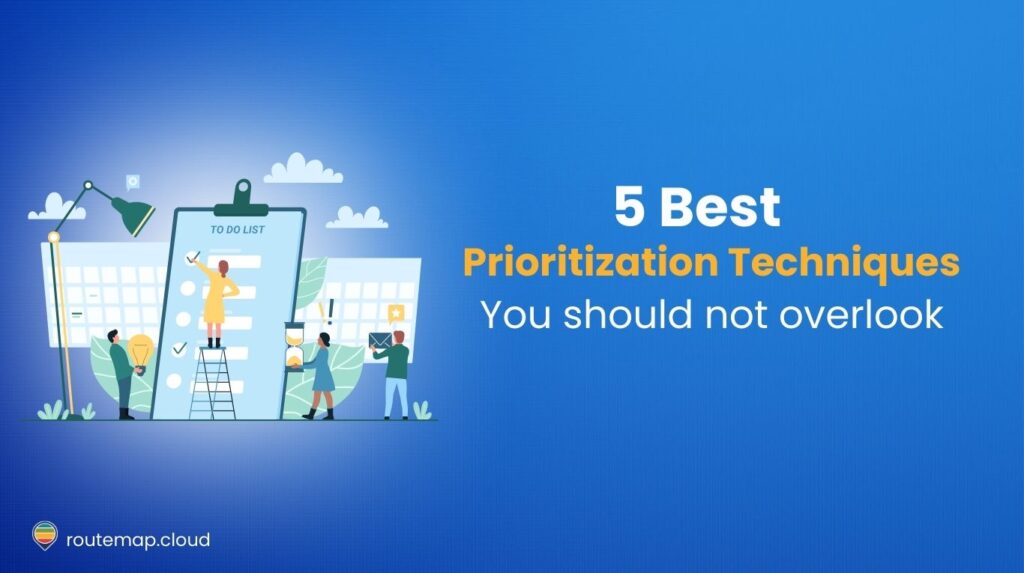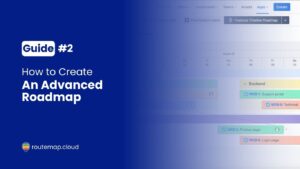In today’s fast-paced business environment, determining which project, feature, or initiative to tackle first can be challenging. Fortunately, there are prioritization techniques that you can utilize to steer your tasks effectively and efficiently.
In this blog, we’ll share the 5 best prioritization techniques that any project manager or startup founder should know about. Let’s dive in.
Table of Content
What is a prioritization technique?
Prioritization techniques are structured methods used to rank the importance of a set of features in product management or project management. Furthermore, these techniques help teams decide which tasks, projects, or features to focus on first, based on various factors such as value, effort, impact, and urgency.
Each technique brings a different perspective and set of criteria to the prioritization process. We have made our list of 5 best techniques, and you can choose one depending on the specific needs and context of your team or project.
Best prioritization techniques for effective product development
We will share 5 techniques in total that any product manager should know about. Besides, we believe that you may have known some of them, but we will tell you some minor drawbacks
1. The RICE framework
Among all prioritization techniques, this is the one you may have heard the most. And it is NOT the “rice” you think it might be.
RICE stands for Reach, Impact, Confidence, and Effort. This prioritization framework (or scoring system) lets product teams focus and work on initiatives likely to impact their given goal the most.
Here is a brief definition of each metric:
| Reach | The number of people or users who will be affected by a project or feature in a certain time period. |
| Impact | This is about how much a project or feature will help each user. |
| Confidence | A measure of how sure you are about your estimates for Reach and Impact. |
| Effort | A rough estimate of how much work the project or feature will take to complete. |
After that, you can use these individual numbers in a formula to get an overall score of one initiative.

What makes the RICE prioritization framework ideal is it helps product teams make more informed and balanced decisions. They will not only take into account the potential benefits but also the level of uncertainty and amount of work needed.
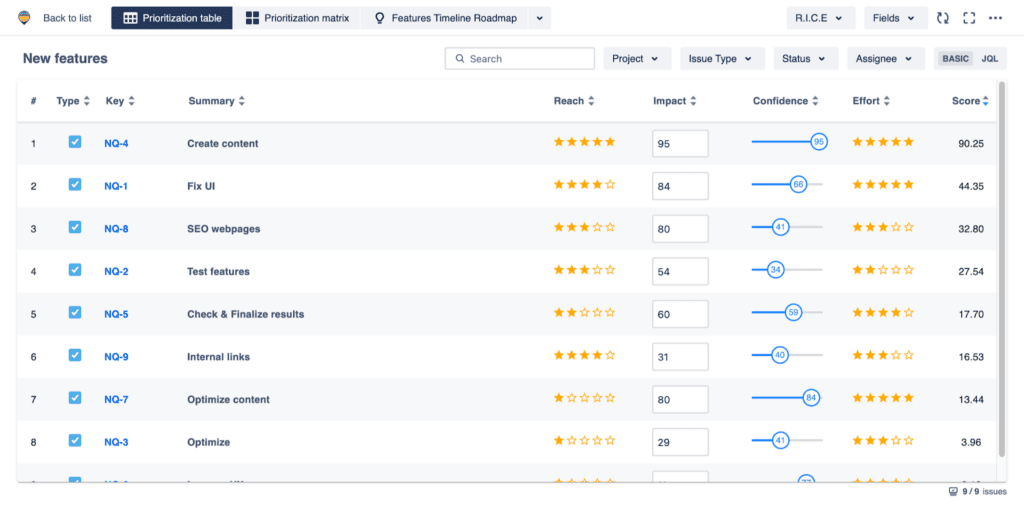
Besides, the goal of RICE is to prioritize projects and tasks with the highest score first. This practice will empower teams to allocate resources efficiently for the most beneficial projects.
*The drawbacks:
The RICE scoring does not take dependencies into account. There will be times when a high initiative gets de-prioritized over something else, and it is not the answer to the final question: “What should we make next?”
Additionally, these estimations in the framework cannot be 100% accurate. In an agile environment, things can change very quickly, leading to changing priorities in the long run.
For more details, you can take a look at the RICE prioritization framework article.
2. The MoSCoW prioritization technique
The next one on our prioritization techniques list is the MoSCoW method. It helps product development teams define the importance of each feature or requirement which allows better decision-making and allocating resources.
Additionally, MoSCoW stands for M – Must Have, S – Should Have, C – Could Have, and W – Won’t Have. You can find the details of each metric below.
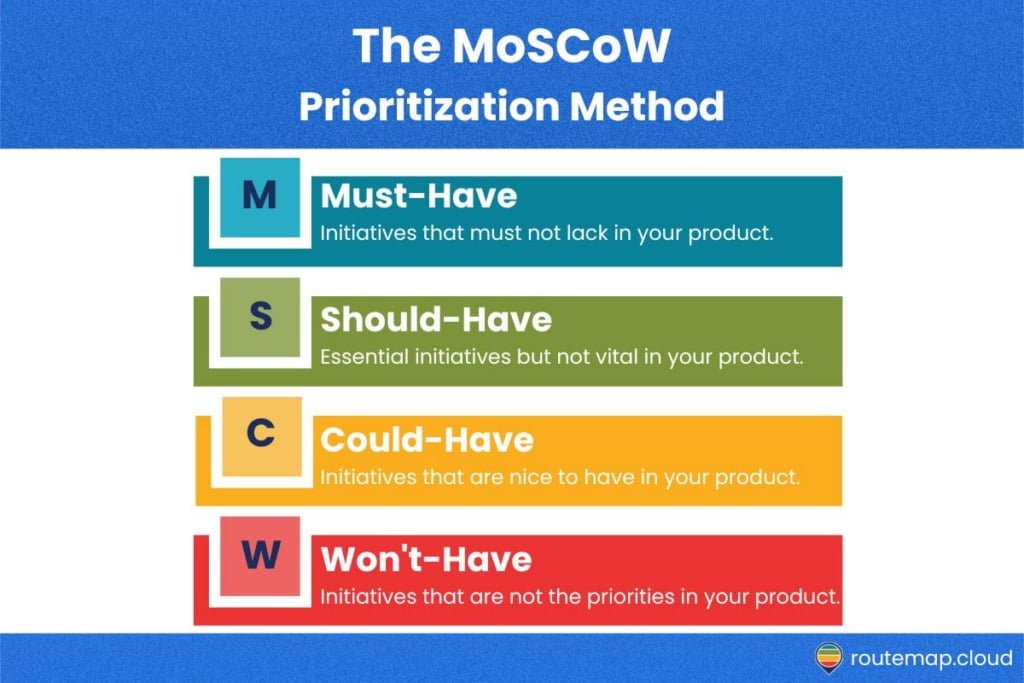
The MoSCoW method helps teams prioritize a large number of requirements. Moreover, it enables project stakeholders to have clear conversations about what is necessary now and what can be done later.
*The drawbacks:
Teams and stakeholders can get too excited and overestimate the number of Must – Have features. Besides, this method is more for formulating releases than prioritizing.
3. Value vs Effort matrix
The Value vs Effort matrix is a simple approach among prioritization techniques. It involves taking your features and initiatives and quantifying them by using value and effort scores.
Simply put, this method helps teams focus on tasks that bring the greatest return on investment.
Here is an overview of Value and Effort:
| Value | Effort |
| – It can be a benefit brought to the company after completing a task or project. – It could be in terms of increased revenue, strategic alignment, customer satisfaction, etc. – The value can be subjective and needs to be estimated. | – It is the amount of work needed to complete a task or project. – It can include time, complexity, resources, and more. – Similar to Value, the Effort also needs to be estimated. |
Once these two factors are determined for each item, they are then plotted on a two-dimensional matrix. The vertical axis represents value, and the horizontal axis represents effort.
The matrix is divided into four quadrants:
- High Value, Low Effort: These are the “quick wins” tasks. They provide good value and require relatively little effort. Therefore, users should prioritize these tasks.
- High Value, High Effort: These tasks could have a significant impact but will also require considerable resources and time. They need to be carefully considered and typically are planned for the medium to long term.
- Low Value, Low Effort: These tasks may not deliver a lot of value, but they’re easy to accomplish. They could be completed when resources are available or put on the back burner when resources are scarce.
- Low Value, High Effort: These tasks provide little value and require a lot of effort. They are typically deprioritized or even discarded unless there are some other strategic reasons to undertake them.
More importantly, this prioritization technique provides room for effective discussions among stakeholders on what value and effort truly mean. In return, this helps product managers discover strategic alignment holes and fix them.
Here is what the Value vs Effort scoreboard looks like in Routemap.
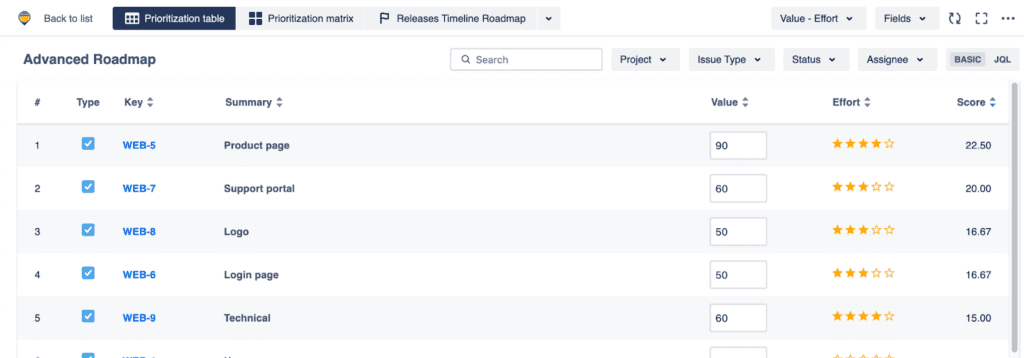
If you are working on Jira, Routemap can help you with this prioritization technique by offering a built-in template and scoring formula. Besides, product managers can also customize it with any prioritization criteria that suit your organization.
>> Try Routemap’s Prioritization for Jira
*The drawbacks:
Although it is simple and offers a visual and intuitive way to prioritize tasks, this model requires some qualitative judgment and estimation to assess the two metrics.
4. The Kano model
Another popular prioritization technique is the Kano model. It is a theory for product development and customer satisfaction developed by Professor Noriaki Kano in the 1980s.
Additionally, this technique allows product managers and developers to understand and categorize 5 types of potential features. After that, they can plot these features against satisfaction and functionality and make informed decisions about product prioritization.
Those 5 types of potential features include:
- Must-Be features: These are the basics. If your product doesn’t have these, people will be unhappy.
- One-Dimensional features: These features make people happier the better they are. For instance, the longer a phone’s battery lasts, the happier people are.
- Attractive features: These unexpected features will impress your customers and can make them really happy. It’s like when you buy a basic tool set and find it includes a handy carrying case.
- Indifferent features: These are the features your customers don’t care about.
- Reverse features: These are features that can actually make customers unhappy.
Moreover, the benefits of using Kano include teaching product teams not to overestimate the exciting features, to stop underestimating the Must-Haves, and to make better product decisions for a feature success.
*The drawbacks:
It can be time-consuming when you want to use this method to conduct surveys to get customers’ opinions and ideas. Besides, your customers might not fully understand what the features are about, which can affect the results of your surveys.
5. Story mapping
What makes this method stand out from other prioritization techniques is its simplicity. Additionally, the story mapping method focuses on the user experience more than just internal opinions from your team and stakeholders.
Moreover, story mapping (or user story mapping) is usually created by beginning with the user’s ultimate goal or objective. Then, teams can break it down into smaller and more actionable tasks, and users will have to complete such tasks to achieve that goal.

All in all, story mapping is like a visual presentation of the user’s journey or experience. It allows teams to organize and prioritize user stories which usually are short and simple descriptions of a feature that users want to achieve.
Besides, the best thing about this prioritization technique is that it empowers teams to quickly and effectively identify the Minimum Viable Product (or MVP).
For more information about the User Story Map, you can take a look at this article HERE.
*The drawbacks:
As it is more user-biased, this method does not take into account external product prioritization factors such as complexity and business value.
Conclusion
So, here is our list of the 5 best prioritization techniques that you should not overlook. By implementing one of these methods, you can build a more successful product that satisfies both your customers and your organization’s standards.
More importantly, you can choose to use one or more of these techniques. Just remember that it depends on your team’s needs, requirements, and at which stage your development is.

